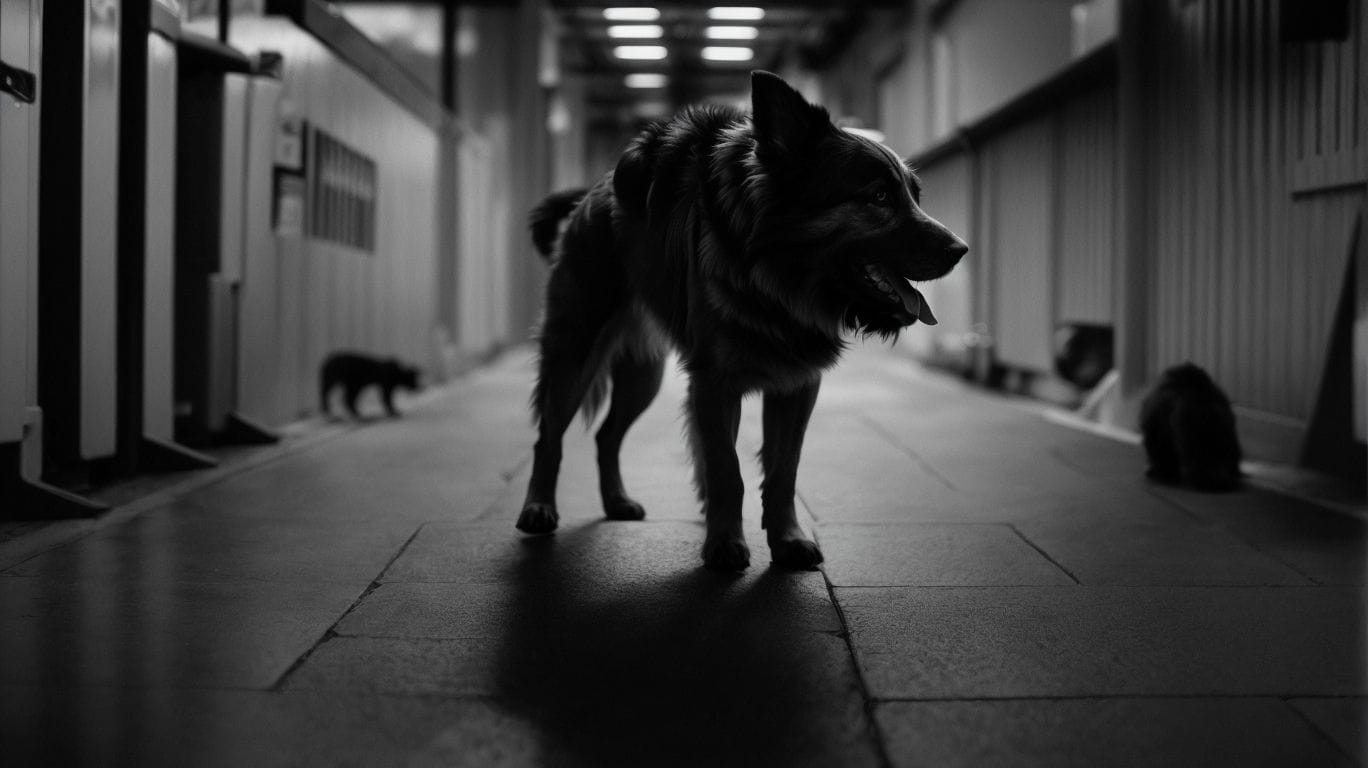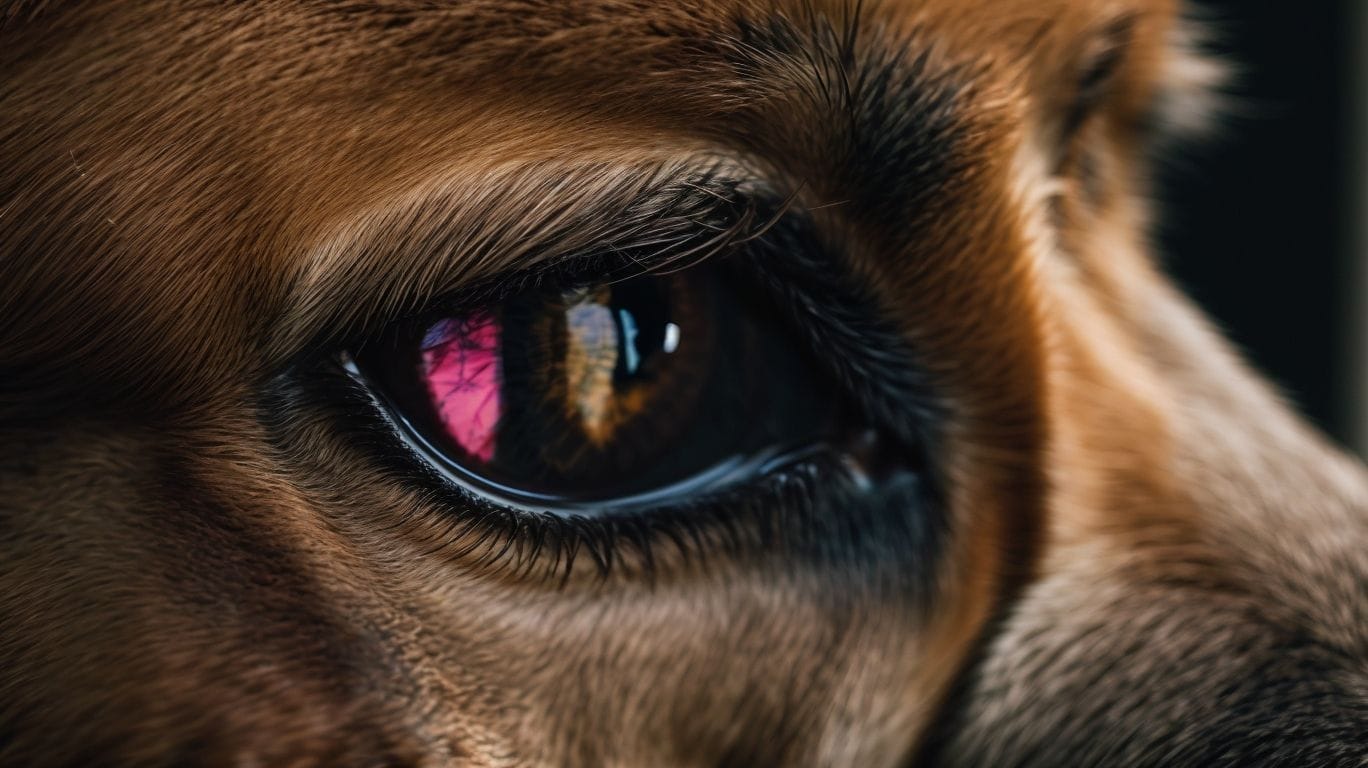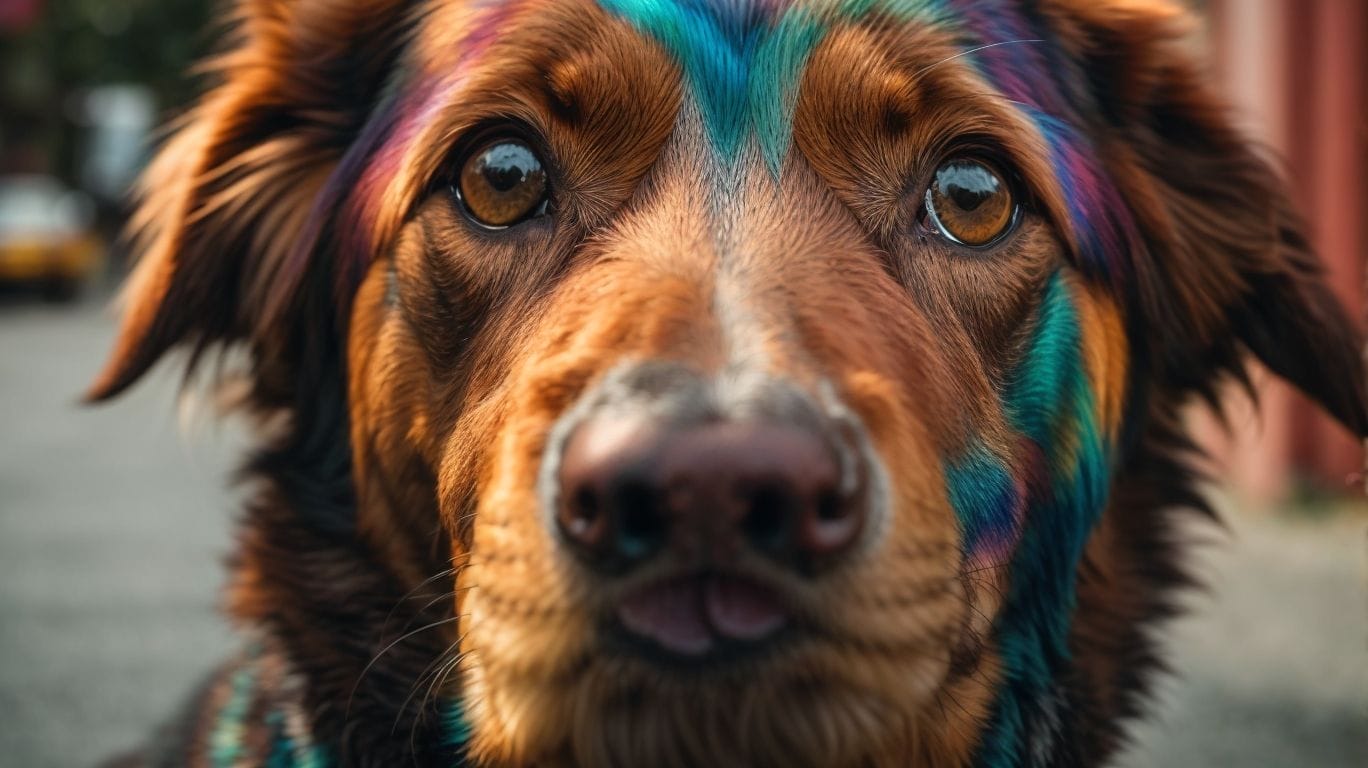Dogs and their visual perception have long been a subject of curiosity and misconception. One common question that arises is whether dogs see in black and white. In this article, we will explore the truth behind this popular belief and delve into the unique aspects of a dog’s color vision.
For many years, it was widely believed that dogs could only see the world in black and white. However, recent scientific research has debunked this notion. Dogs, like humans, do possess the ability to see colors, although their spectrum is more limited compared to ours.
The perception of colors in dogs is influenced by the structure and function of their eyes. Dogs have specialized cells called cone cells in their retinas that allow them to perceive different wavelengths of light. Interestingly, dogs have fewer cone cells than humans, which means they have a reduced ability to discriminate between different colors.
The limited color spectrum that dogs can see consists of shades of blue and yellow. Colors such as red and green may appear more muted or blend with other hues in a dog’s vision. Despite this, dogs have superior night vision due to a higher number of rod cells in their retinas, which are responsible for detecting low levels of light.
Furthermore, dogs have remarkable motion detection abilities, allowing them to track moving objects with ease. This instinctual skill has been honed in dogs through centuries of evolution as it served them well in activities such as hunting.
It’s important to note that there are variations in visual acuity among different dog breeds. Some breeds may have better vision than others, while certain breeds may be prone to eye-related health issues.
As dogs age, their vision may undergo changes, just like humans. Regular check-ups and observation of any changes in your dog’s behavior can help identify potential vision problems and ensure their overall eye health.
To wrap up, dogs do not see the world in black and white. While their color vision is less vivid compared to humans, they can still perceive certain colors. Dogs also possess superior night vision and exceptional motion detection abilities, making them well-adapted to their natural environments. Understanding these aspects of a dog’s vision can deepen our appreciation for the unique way in which they experience the world around them.
Key Takeaways:
- Previous Belief: Dogs were thought to see only in black and white, but this is a misconception.
- Truth about Color Vision: Dogs can see colors, but their color spectrum is more limited compared to humans.
- Cone Cells: Dogs rely on different types of cone cells in their eyes to perceive colors, with blue and yellow being the most distinguishable for them.
Do Dogs See in Black and White?

Photo Credits: Petnarnia.Com by Bruce Lee
Do dogs really see the world in black and white? Let’s unravel the truth about dogs’ color vision in this section. We’ll dive into what was previously believed and explore the fascinating reality behind how dogs perceive colors. Get ready to discover some surprising facts about our furry friends’ unique visual abilities!What Was Previously Believed
Prior to scientific research, it was widely believed that dogs see the world in black and white. This misconception stemmed from the understanding that dogs have fewer cone cells in their eyes compared to humans, which are responsible for color vision. It was thought that dogs perceive the world solely in shades of gray. Further studies have revealed that while dogs do have limited color vision, they can actually perceive certain colors. While their color vision may not be as vibrant or as broad as humans, dogs are able to see some colors, particularly in the blue and yellow spectrum. This finding has helped to dispel the long-held belief that dogs see exclusively in black and white. What Was Previously Believed is now proven incorrect through scientific research and study.
The Truth About Dogs’ Color Vision
The Truth About Dogs’ Color Vision
Dogs’ color vision has long been misunderstood, but the truth is that they see the world in shades of blue and yellow. While humans have three types of cone cells for color perception, dogs only have two, limiting their ability to distinguish between certain colors. They can perceive blue and yellow hues but struggle with differentiating between red and green. This unique color vision is due to the specific arrangement of their cone cells. Understanding dogs’ color vision helps us comprehend how they perceive the world around them and how it influences their behavior and interactions.
How Do Dogs Perceive Colors?

Photo Credits: Petnarnia.Com by Kevin Jones
Curious about how dogs perceive colors? Let’s dive into the fascinating realm of canine vision. We’ll uncover the inner workings of their eyes, exploring the role of cone cells and how they shape a dog’s color perception. We’ll shed light on the limited color spectrum that dogs can see, unveiling a surprising aspect of their visual world. Prepare to see colors from a furry friend’s perspective that will make you question if it’s really a black and white world for them!The Role of Cone Cells
Cone cells play a crucial role in a dog’s color vision. The role of cone cells is to detect different wavelengths of light and transmit signals to the brain. Due to their limited number of cone cells compared to humans, dogs have a restricted ability to perceive a wide spectrum of colors. Unlike humans who have three types of cone cells for red, green, and blue, dogs only possess two. This results in their vision being limited to shades of blue and yellow, a condition similar to humans with red-green color blindness. Understanding the role of cone cells gives insight into why dogs may struggle with distinguishing certain colors.
To enhance a dog’s sensory experience and compensate for their limited color vision, it is advisable to use dog toys or accessories that incorporate blue or yellow colors. Additionally, incorporating scent-based cues in training exercises can be highly beneficial, as dogs heavily rely on their sense of smell.
The Limited Color Spectrum Dogs Can See
Dogs have a limited color spectrum compared to humans. While humans can see a wide range of colors, dogs primarily see in shades of blue and yellow. This is because they have a fewer cone cells in their eyes, which are responsible for perceiving color. Dogs are also less sensitive to red and green colors, making them appear more muted or gray to dogs. This limited color vision is compensated by their superior night vision and motion detection abilities. So, while dogs may not see the world in full color, they have other sensory capabilities that allow them to navigate and interpret their environment effectively. The Limited Color Spectrum Dogs Can See
Other Aspects of Canine Vision

Photo Credits: Petnarnia.Com by Jose Thompson
Discover intriguing facets of canine vision in this section as we explore the other dimensions of how dogs perceive the world around them. Unveiling their remarkable abilities, we’ll delve into their superior night vision and their uncanny knack for detecting motion. Prepare to be fascinated by the unique visual prowess of our beloved four-legged companions, as we uncover the mysteries behind their extraordinary sight.Superior Night Vision
Dogs possess superior night vision compared to humans, thanks to their unique adaptations. Here are some reasons why:
- Enhanced low-light vision: Dogs have a higher number of rod cells in their eyes, which are specialized for detecting dim light. This allows them to see better in low-light environments.
- Tapetum lucidum: Dogs have a reflective layer called the tapetum lucidum behind their retina. It amplifies incoming light, enhancing their ability to see in the dark.
- Wider pupil dilation: Dogs’ pupils can dilate significantly more than humans’, allowing more light to enter their eyes and improving their night vision.
Pro-tip: If you’re out for a walk at night, give your dog some extra space and let them take the lead. They will navigate better in low-light conditions.
Motion Detection Abilities
- Dogs have impressive motion detection abilities, which are a crucial aspect of their visual perception.
- They have specialized cells called rod cells that are highly sensitive to motion detection abilities and allow them to detect even the slightest movements.
- This ability is particularly important for hunting, as it helps dogs track and catch their prey effectively.
- Dogs’ motion detection abilities also contribute to their excellent reflexes and agility, allowing them to navigate through their environment with precision.
When playing with your dog, you can take advantage of their motion detection abilities by using toys or games that involve movement, such as fetch or tug-of-war. It stimulates their natural instincts and provides mental and physical exercise.
Factors Influencing Canine Vision

Photo Credits: Petnarnia.Com by Kenneth Green
Discovering the intriguing world of canine vision, we unravel the various factors that influence how dogs perceive the world around them. From breed variations in visual acuity to age-related changes in vision, we’ll delve into the fascinating details surrounding these aspects. Let’s dive into the captivating realm of canine vision and explore how different factors can shape the way our four-legged companions see the colors of life.Breed Variations in Visual Acuity
Breed Variations in Visual Acuity
Breed variations in visual acuity are a significant factor in how dogs perceive the world around them. Genetic factors and specific characteristics of each breed contribute to differences in eyesight. Let’s explore a few examples of these variations:
- Border Collies: Renowned for their exceptional herding abilities, Border Collies have remarkable visual acuity. This enables them to accurately track and control their flock.
- Greyhounds: With their elegant, slender heads, Greyhounds possess a wider field of vision and superior depth perception. These attributes make them outstanding sprinters.
- Bulldogs: Bulldogs, known for their characteristic short snouts, may exhibit poorer visual acuity compared to other breeds. As a result, they heavily rely on their other senses.
Understanding these breed variations can assist dog owners in tailoring their training and enrichment activities to suit their pet’s specific needs. Remember to consult with a veterinarian for personalized advice based on your dog’s breed and overall health.
Age-Related Changes in Vision
As dogs age, there are certain Age-Related Changes in Vision that occur. These age-related changes can include a decrease in visual acuity, cloudiness of the lens (known as cataracts), and a decreased ability to see in low-light conditions. Older dogs may also develop a condition called presbyopia, which makes it difficult for them to focus on objects up close. It is important to monitor your dog’s Age-Related Changes in Vision as they age and consult with a veterinarian if you notice any significant changes. Regular check-ups and proper nutrition can help support your dog’s eye health as they get older. Remember to provide a safe and comfortable environment for your senior dog, and always follow the advice of your veterinarian for proper care.
Fun Facts About Dogs’ Vision

Photo Credits: Petnarnia.Com by Michael Williams
Fun Facts About Dogs’ VisionDogs have an interesting visual perception that differs from humans in several ways. Here are some fun facts about dogs’ vision:
- Dogs can see in color, but not as vividly as humans. They have a limited color range, primarily perceiving blues and yellows.
- Dogs have better night vision than humans because they have more rods in their eyes, which are specialized for low-light conditions.
- Dogs have a wider field of view than humans, with a range of about 240 degrees compared to our 180 degrees.
- Dogs have a keen sense of motion detection and can easily spot moving objects even at a distance.
- Dogs have a reflective layer behind their retinas called the tapetum lucidum, which enhances their ability to see in dim light.
Some Facts About “Do Dogs See in Black and White?”:
- ✅ Dogs do not see the world in black and white. (Source: Pedigree.com)
- ✅ Dogs have limited color vision compared to humans. (Source: Our Team)
- ✅ Dogs can see shades of yellow and blue. (Source: Our Team)
- ✅ Dogs may perceive red and green as shades of tan. (Source: Our Team)
- ✅ Dogs have fewer types of cone cells in their retinas compared to humans. (Source: Our Team)


